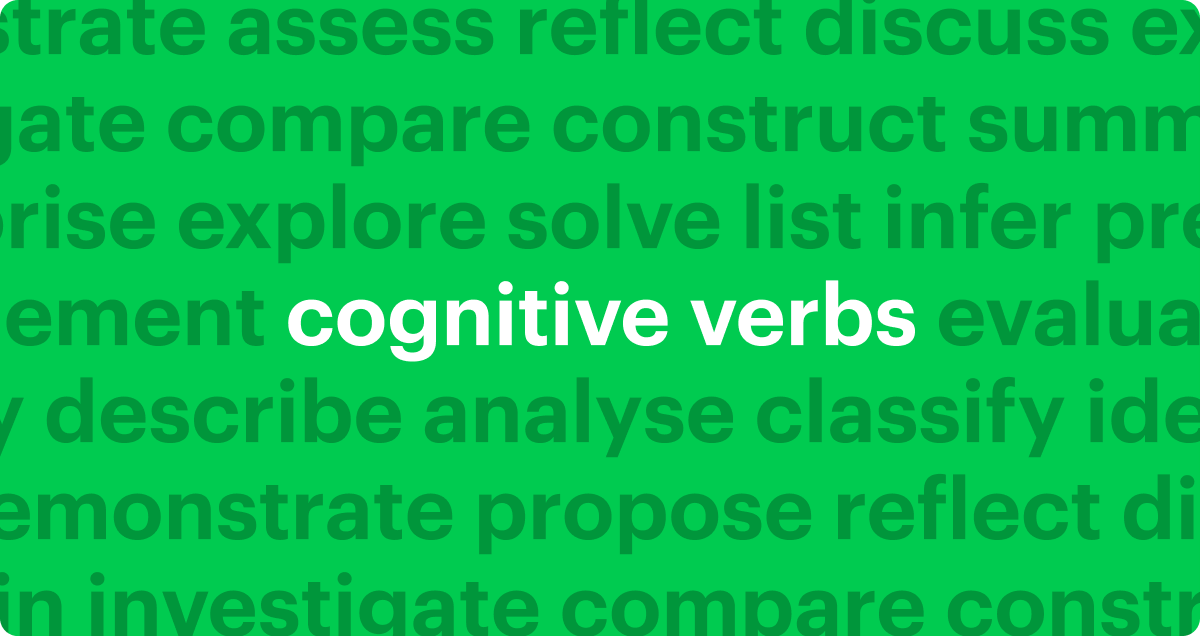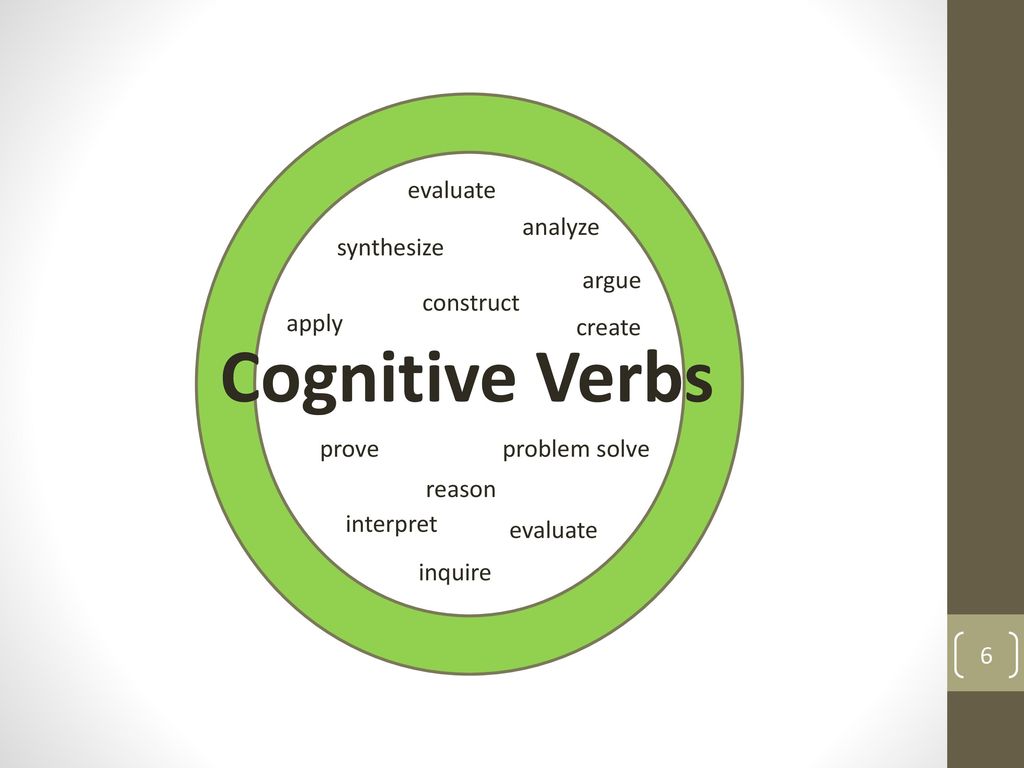
There are three types of words that can be used to describe a person’s thoughts, emotions, or intentions. They are known as “cognitive verbs”. Examples of such words would be believe, hope, and imagine. But in most cases, there are many more cognitive verbs than just those three.
These words can be quite useful when writing text because it will help to make the reader understand exactly what you mean to say. However, if you aren’t familiar with them yet, you might find that you struggle to use the right word for a particular situation. If this is the case, then you need to study some cognitive verbs.
In this post we provide you with a list of common cognitive verbs so you can start using them correctly immediately. We also explain what they mean in simple terms, including examples.
What Are Cognitive Verbs?
Have you ever heard someone say that they were feeling “down” or “blue”? Well, this is a form of expression known as a verb. This type of word expresses how someone feels, rather than just telling them what they feel like. For example, when you ask someone to describe their mood, you might be able to tell that they are sad, but you won’t really know why.
A better way to express your feelings would be to use a verb. Cognitive verbs are words that show how we feel. They are usually used in sentences such as: I am happy, I feel angry, or I feel depressed. You can also make these statements by using adjectives.
So what exactly are cognitive verbs? The first thing to understand is that they don’t always have to be negative emotions. In fact, you may use a cognitive verb to describe something good. For example, you could say that you’re excited, or that you’re satisfied with your life.
In order to create more positive thoughts, it helps to try to avoid negative ones. So, if you find yourself thinking about a negative event, then stop and change the subject of your mind.
Importance of Cognitive Verbs?
I’m sure that you have heard the term “cognitive verb” before. Cognitive verbs refer to words that describe how you feel. For example, the word “feel” is a cognitive verb. You can use these kinds of verbs when you’re describing your emotions.
You should be aware of the importance of using cognitive verbs. If you don’t, you might end up writing an essay where you say things like, “I felt sad.” That’s not very interesting! What you need to write instead is, “My sadness made me feel angry.” This kind of language makes the reader understand exactly what you mean.
If you want to learn more about this topic, then keep reading below. There are many different ways that you can use cognitive verbs in your essays. So, read on and discover them all.
1. Use a sentence with the word “to,” such as, “She feels bad to her friend.”
2. Write a sentence about what someone is thinking or feeling. For example, you could write, “He thinks that he looks fat to his girlfriend.”
3. Describe how something is affecting you. For instance, you could write, “The rain affects my mood to make me gloomy.”
4. Tell the story of an event.
How Do the Cognitive Verbs Work?
A cognitive verb is any type of word that describes how you feel about someone or something. For example, you can use the verb “love” to describe your feelings for another person. Or you could say that you hate a certain movie.
If you want to know more about cognitive verbs, you need to understand the three different parts that make up this kind of language. The first part is the noun. This refers to the object that you’re describing. In other words, when you talk about love, you’re actually talking about the feeling of loving.
Next, you have the adjective. An adjective is a word that describes an action. If you said that you loved your friend, then you were referring to the act of loving.
Finally, there are the adverbs. Adverbs modify adjectives and nouns. You can think of them as being like the pronouns in English. So, if you’re talking about a specific time, then you’d use the pronoun “now” instead of an adverb.
So, what does all this mean? It means that cognitive verbs are basically just a way to describe your emotions. And they allow people to communicate their thoughts without using the actual words.
What Are the Different Types of Cognitive Verbs?
If you want to improve your English vocabulary, then you should focus on learning new words. If you don’t know how to learn new words, then you’ll struggle to get better grades in school.
There is no single type of word that you need to memorize. Instead, the best way to learn a new word is to use it in sentences. For example, you can start by reading books and magazines. You can also watch movies and TV shows. Once you have learned the meaning of the word, then you can look at its usage in real life situations.
Here are some examples of common cognitive verbs.
To understand: to know or grasp the meaning or significance of something.
To remember: to store information in your brain so that you can recall it later on.
To forget: to lose knowledge or skills that you’ve previously acquired.
To believe: to accept or acknowledge the truth of something.
To doubt: to be unsure about the validity of something.
To think: to make up one’s mind about a situation.
To feel: to experience emotion or sensations.
To judge: to decide whether a certain thing is right or wrong.
To imagine: to create a mental picture of a person, place, or object.

How Do You Know If a Verb Is Cognitive?
Verbs have different meanings depending on how they’re used. Some verbs can be both active and passive, while others can either be active or passive. Active and passive verbs differ in the way that they describe actions. For example, the verb “to write” can mean two very different things. The first meaning of this word describes an action where someone does the writing. This type of verb is known as a cognitive verb.
On the other hand, the second meaning of the same verb refers to the act of being written. In this case, it’s a non-cognitive verb. Here are some examples of these types of verbs.
Active: to cook, to swim, to run, to drive, to eat, to sleep, to live
Passive: cooked, swam, ran, drove, ate, slept, lived
Non-cognitive: to be cooked, to be swimming, to be running, to be driving, to be eating, to be sleeping, to be living
You can use this information to help you learn new vocabulary.
When you’re learning a new language, you need to make sure that you understand the difference between cognitive and non-cognitive verbs.
What Is the Most Common Cognitive Verb?
When you’re trying to learn new things, it’s important that you understand how your brain works. The article below will explain why you need to be careful when learning certain skills.
Your mind uses two different parts to process information. One part is the conscious side, which makes decisions on its own. This is known as the executive function of the brain.
The other part is the subconscious side, which does all the work. For example, this means that you’ll automatically use the right muscles when playing a sport. You won’t have to consciously decide whether or not to swing a bat, kick a ball, or hit a tennis racket.
However, it also means that you don’t always make good choices while using these automatic functions. If you want to improve your performance at something like chess or basketball, then you should focus on the things that are happening in the subconscious mind.
You can do this by focusing your attention on the tasks that you need to complete. When you start thinking about what you’re doing, this will help to stimulate the areas of the brain responsible for making decisions.

